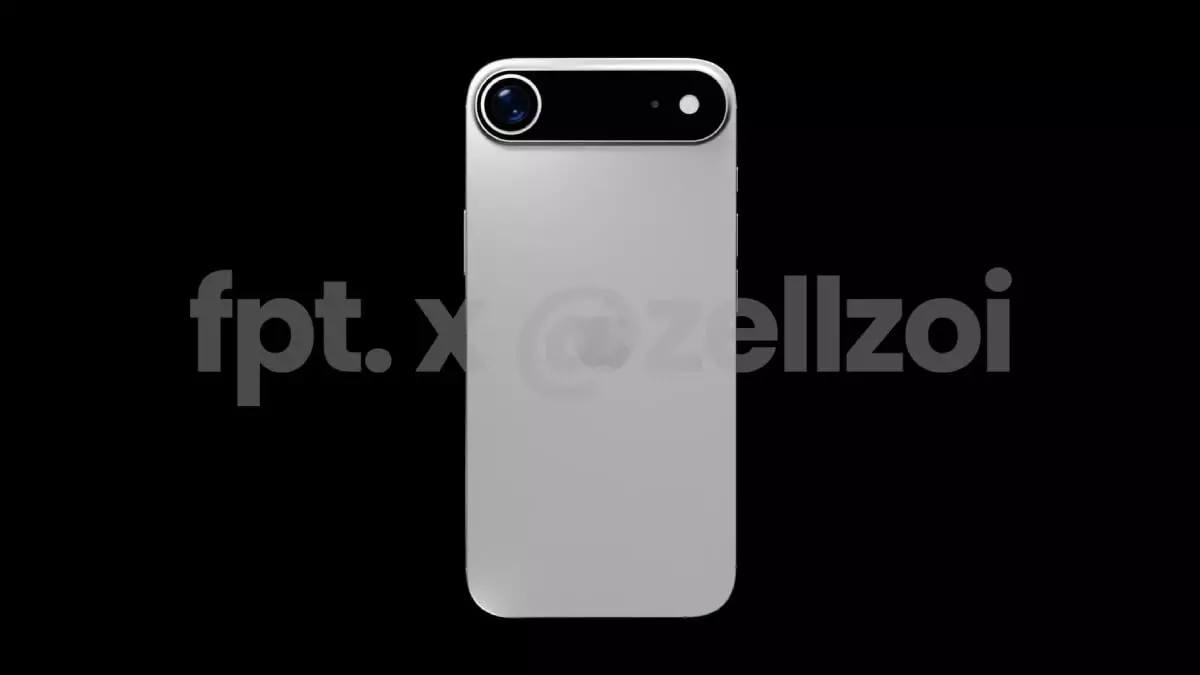Apple’s design philosophy has often prioritized sleekness and elegance, but the upcoming iPhone 17 Air promises to take this ethos to an entirely new level. At merely 5.5mm thick, this smartphone is not just a technical achievement; it represents a bold statement in an industry often ready to bulk up its offerings with additional features and components. With the likes of the Samsung Galaxy S25 Edge looming in the competitive landscape, Apple’s slimmer design could either be a revolutionary step forward or a risky maneuver that sacrifices functionality for aesthetics.
But let’s be clear: Thinness for the sake of thinness can lead to a host of complications. As we delve into the implications of this latest design, it’s important to consider whether the reduction in thickness compromises critical features and overall user experience. In a world where battery life, camera performance, and sturdiness also play essential roles in consumer satisfaction, can Apple truly accomplish cutting-edge innovation while remaining practically slim?
Dimensions and Comparisons
The rumored dimensions of the iPhone 17 Air are strikingly similar to those of the iPhone 17 Pro Max—163mm in height and 77.6mm in width. This alignment in design, with a notable difference in thickness, seems to be Apple’s effort to cater to those who prefer both flagship performance and an ultra-slim profile. However, when we contrast it with its peers, such as the thicker iPhone 17 Pro Max and the anticipated iPhone 16 Plus, one must ask: will consumers really overlook functionality for the sake of a sleek silhouette?
While layouts may mirror each other, it is the specifications that will ultimately determine the device’s appeal. The iPhone 17 Air’s single rear camera suggests a focus on minimalism and perhaps sacrifices the robust features of multiple cameras featured in its more substantial sibling. In the age of social media, photos are the lifeblood of connection, so how well will one camera stand up to the multi-lens setups that many competitors now boast?
Material Choices and Cost Implications
According to reports, the iPhone 17 Air will be constructed with a titanium frame, marking a shift in materials that promise both sturdiness and aesthetics. Titanium is hailed for its durability and lightness, but is it worth the potential increase in manufacturing costs? In an era wherein consumers are increasingly sensitive to pricing, one must ponder how this will impact the device’s final retail price and market competitiveness.
Apple’s calculated material choices do align with its luxury branding but may also evoke skepticism among users who prioritize practicality over prestige. The shift could be a double-edged sword—embracing titanium might enhance perceived value, yet for some, it could come across as an extravagant necessity in a smartphone, further widening the gap between design slickness and everyday functionality.
A Cautious Step Towards a SIM-Free Future
In an interesting move, reports suggest that Apple plans to eliminate the physical SIM slot altogether. As the industry gradually shifts towards eSIM technology, this shift in design makes sense. However, it raises serious concerns: how will this affect connectivity during international travel or in areas with poor network support? A seamless transition is ideal, but such bold steps can lead to complications and may alienate users who are not ready to let go of traditional SIM cards.
The decision manifests a larger trend within the tech industry, where convenience often weighs against accessibility. One might wonder: in pursuing an ultra-slim design, are technology companies, Apple included, straying too far from the fundamental needs of average users?
The Risk of Sacrificing Practicality for Aesthetics
In a world that appears increasingly captivated by minimalist design, Apple’s iPhone 17 Air could be perceived as a reflection of societal trends that prioritize style over substance. While consumers have demonstrated a willingness to embrace new aesthetics, the essential qualities that make a smartphone functional remain non-negotiable. How will Apple balance elegance with everyday usability?
Though many may be eager to crown the iPhone 17 Air as a trendsetter, it stands as a reminder that, while design aesthetics are critical in creating emotional connections with consumers, they should never overshadow the practicality and features that drive overall satisfaction. If the iPhone 17 Air is to thrive, it must do so by harmonizing its stunning sequence of lines with the demands of contemporary digital life. The path toward a more slender smartphone might lead to a daunting crossroads—a choice between serving the market’s appetite for sleek design and satisfying the call for functionality.


Leave a Reply